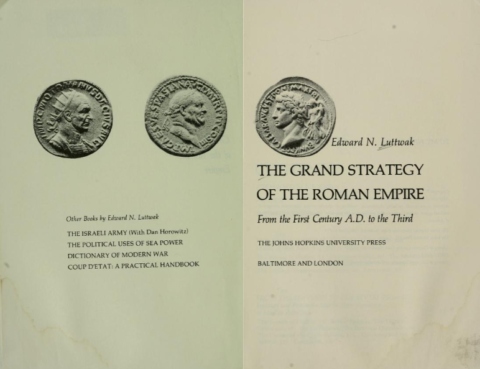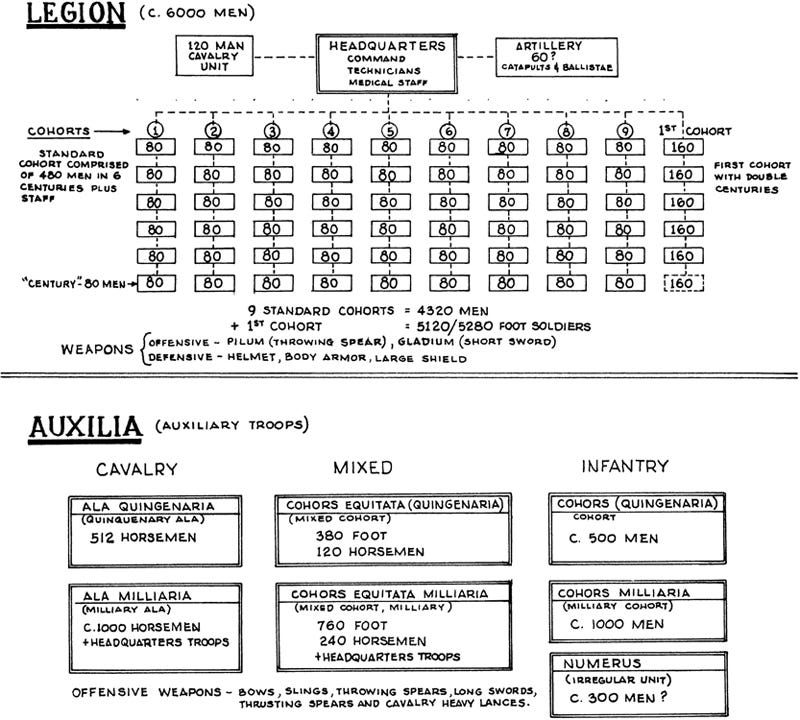In the latest book review from Mr. and Mrs. Psmith’s Bookshelf, John Psmith considers Edward Luttwak’s fascinating and controversial The Grand Strategy of the Roman Empire, a book I quite enjoyed reading although I think his much later The Grand Strategy of the Byzantine Empire one of his best books.
In one of the dozens of notorious interviews of Edward Luttwak that float around the internet, he’s asked how he chose the topic for his PhD dissertation. His answer is that one day at university he had a humiliating social encounter. Immediately afterwards, somebody pounced on him and asked what his dissertation was about anyway. He hadn’t even started thinking about what his topic would be, but he obviously couldn’t say that, and so instead he puffed himself up and made something up on the spot, and he did so by saying the most grandiloquent series of words one at a time like a large language model feverishly choosing the next token to maximize self importance: “The … GRAND … Strategy … … OF THE ROMAN EMPIRE!!” His interlocutor was sufficiently awed and impressed, but then he had to write the damn thing. Like all Luttwak stories, this is probably false but totally believable.1
But I’m very glad he wrote that thesis, because it was later turned into the wonderful book I’m reviewing. Now, one of the ways that the Psmiths subvert traditional gender roles is that it’s Jane, not I, who thinks about the Roman Empire every day. But this is only pretending to be a book about the Roman Empire. It’s really a book about “grand strategy” — how states can efficiently allocate scarce military, diplomatic, and financial resources to counter a variety of internal and external threats. It’s true that the examples are mainly drawn from four centuries of Roman history — starting with the Julio-Claudian dynasty and ending with the Empire losing control of Italy and Western Europe — but the analysis, and the lessons, are abstract enough that they transcend that particular context.
Luttwak believes that the state is a kind of machine for turning arable land into military power via taxation and conscription. A state that wants to maximize its survival odds can do so in three ways: (1) it can increase its “inputs”, by bringing a larger quantity of arable land under its control (so long as it avoids a commensurate increase in the threats it faces); (2) It can increase the efficiency of the machine, by extracting more grain and more labor from the people it rules, or by undertaking internal reforms to reduce the amount of potential that’s bled away by corruption and decadence; or (3) It can use its military as effectively as possible, doing more with less, killing many birds with one stone or setting up situations where a small allocation of force can tie down much larger opponents.
This third option is more or less what Luttwak means by “grand strategy,” and I think it may be the key that ties together all of Luttwak’s writing and thought. What do a book about the ancient world and a book about Cold War era coups have in common? They’re both about doing more with less, economizing force by wielding it with overwhelming brutality and efficiency. Luttwak’s coldly arithmetic view of the state is reminiscent of nothing so much as James C. Scott’s view of the world,2 but Luttwak is on the opposite team. Scott is an anarchist, Luttwak is a hard-boiled realist, and moreover he’s one with a deep aesthetic appreciation for power and violence, especially when used elegantly, like a scalpel, such that they have effects far out of proportion with their quantity.3
The history of Rome that Luttwak wants to tell is not the history of its cultural or civilizational achievements, but rather the history of how these people were so incredibly good at economizing on violence that they were able to waste a huge portion of their military and economic potential on civil wars, but still keep the lights on and the barbarians at bay. “Grand strategy” is how they accomplished that, but the strategy changed as the threats evolved and as the internal condition of the empire deteriorated. Luttwak delineates three distinct epochs — the founding of the empire under the Julio-Claudian dynasty, the rationalization of frontiers under the Antonine emperors, and the Crisis of the Third Century — and argues that each of the three featured a fundamentally different overall strategic posture on the part of Rome.
But before we get into all of that, I suppose we ought to talk about the legions. When people think of Roman military power, they usually think of the heavily-armed guys with red cloaks and horsehair plumes on their helmets. But of course they only made up a small fraction of the Roman military. We know that this has to be true because ancient armies, as much as modern armies, relied on combined-arms for their success. A legionary was a very scary kind of soldier, combining the roles of heavy infantry and combat engineer, but an army made up entirely of heavy infantry would be shredded by an opposing force of horse archers, for instance. So the Romans brought many other kinds of troops to bear: skirmishers, slingers, archers, light infantry, cavalry of their own (including mounted archers, light cavalry, and lancers with primitive barding that are a clear precursor of Medieval knights). And … almost to a man, all of these other forces were non-Roman.4 They were either mercenaries, or allied barbarians, or auxiliaries. As a kid in ancient history class I just accepted this as a fact, but reflect on it for a second and it seems very weird. This whole arrangement caused the Romans no end of trouble, so why did they do it that way?
Take the Luttwak pill and it all becomes clear: the Romans went all-in on legionaries as a way of economizing on force. The only people Rome could absolutely rely on were her citizens. The definition of a “real” Roman changed over time — at first it was only inhabitants of the city of Rome itself, later it was expanded to the surrounding countryside, and finally to all of Italy. But at every point it was a tiny fraction of the total population of the empire. Of that tiny fraction, some even smaller fraction are available to be trained as soldiers and to bear arms. What do you want those guys to be doing? The Roman answer is that you want them to be legionaries, because legionaries are not general-purpose soldiers, they’re specialists, and their specialties are: (1) besieging enemy cities, and (2) battles of attrition and annihilation.
1. Evidence that it’s false, he tells a completely different story in a different interview!
“I chose the subject because no theme in contemporary strategy was anywhere as interesting as the simple question of how Rome defended its territories (and added to them, now and then). Also, I did not want to waste my days reading the stultified & chaotically duplicative literature of ‘political science’ in which Strategy is imprisoned, when I could read instead in the often elegant, multi-lingual literature of Roman imperial studies.”
2. The zoomed-out, autistic alien robot anthropologist nature of this analysis also reminds me a bit of Vaclav Smil.
3. Wouldn’t the most elegant use of power be its deployment in such a way that it doesn’t really have to be used at all? In fact this is the main theme of Luttwak’s most recent book, The Grand Strategy of the Byzantine Empire, a sort of sequel to this one. In the same interview as in the first footnote, Luttwak summarizes the argument of that book: Byzantine strategy was based on:
“a single, paradoxical, principle: do everything possible to raise, equip and train the best possible army and navy, and then … do everything possible to use them as little as possible … every alternative was to be tried to avoid, or at least minimize the destructive ‘attrition’ combat of main forces. Instead, potential enemies were to be dissuaded, bribed, subverted, weakened by getting others to attack them, sidetracked into other ventures; if enemy forces attacked nonetheless, they were to be contained and delayed by skirmishing, feints and demonstrations while the search went on for other powers near or far willing to attack or at least threaten the enemy power; if enemy attacks persisted nonetheless, they were to be met by countering maneuvers designed to exhaust them rather than the destructive combat of main forces, the very last resort. It was not only the precious trained manpower of the empire that this strategy wanted to conserve, but also the enemy’s … because today’s enemy could become tomorrow’s ally.
4. This isn’t quite true in every period. For instance during the Punic Wars, the Romans fielded “equites“, native Roman cavalry of their own, but it fell out of fashion pretty quickly thereafter.





